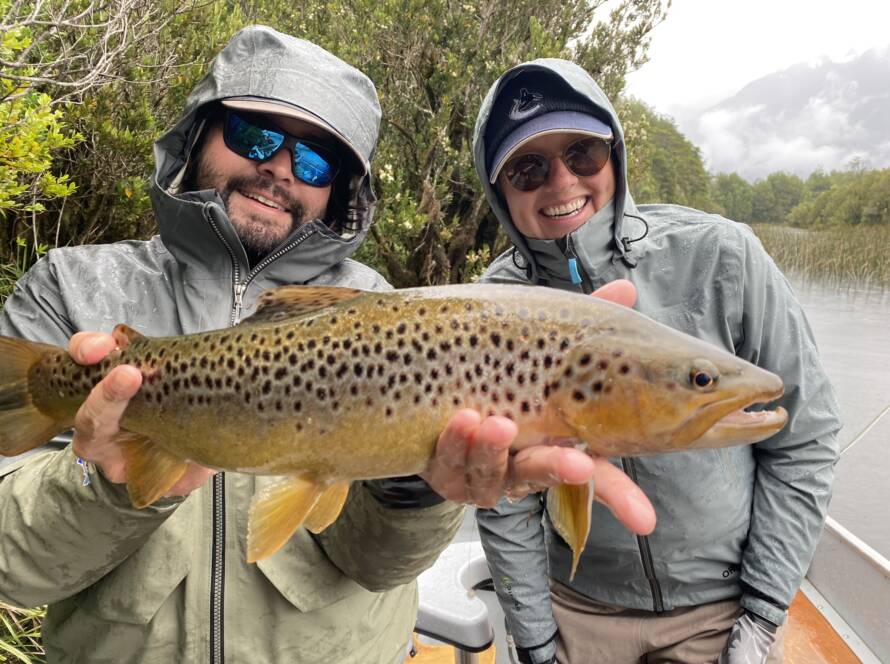Fly Tying
Seatrout generally love big protein-rich prey items so, when targeting them, you shouldn’t be afraid of using big flies. Especially from late spring throughout the summer months and well into fall, seatrout feed ferociously on prey fish such as herring, sprattus, gobius, stickleback and sandeel. And the latter are typically found along relatively shallow coastal stretches with a mixture of sandy patches, rocks and seagrass. In other words, places that are perfect for fly fishing.
By Rasmus Ovesen
Sandeels are a group of silvery, eel-like and spiny-finned marine fish that can be found burrowing in sand or shingle – or migrating along the coastal shorelines in big schools. The most common member of the family, the Northern European sandeel (Ammodites dubius), is a popular prey item, and especially seatrout tend to key in on them. They range in size from 10 to 20 centimeters and they present a solid mouthful for a hungry seatrout.
There’s a reason sandeels are called “SANDeels”. They prefer habitats with sandy bottom where they can burrow into the sediments and hide when they’re not feeding. They can’t hide forever, though, so they school up regularly and hunt for small crustaceans, such as copepods, and when they do, they need to be constantly on the move (as they have no swim bladder). At short distances, they’re fast swimmers with an erratic S-curve movement pattern, but over longer distances, they’re no match for a seatrout.
The Wiggle Sandeel is a pattern designed to imitate the sandeels slithering S-curve movement while at the same time opting for a great degree of physical similarity. It can be varied in size according to the sandeel found along your local coastal shores, and it is very durable and stable in the water. It is best fished on an intermediate line with a double-hand retrieve and a fair amount of speed – without any pauses.
Try a Wiggle Sandeel the next time you fish a local coastal stretch with mixed sand bottom. If there are sandeels around, seatrout are bound to circle in and hunt for them. Be on the lookout for swirls and wakes, and cover as much water as you can. And be prepared! The resulting strikes are often lightning fast and prompt.

Seatrout are normally found hunting for sandeels during the summer and into the fall months – especially along coastal shores facing the open sea or along the outer parts of the fjords. They’re a prey item that comprise a significant part of the seatrout’s diet, especially for the biggest individuals. And, not surprisingly, many of the biggest Scandinavian seatrout ever landed have been caught on sandeel imitations.
Seatrout prefer to hunt where there’s cover to find, and since sandeels prefer bare, sandy bottom, seatrout will typically hunt for sandeels by cruising the perimeters of the sandbars and -shoals that are found parallel to the coastline and make surprise attacks onto the sandy parts.
The intersections are typically found where the water drops off a little bit, and the proximity to deeper water means that bigger fish are likely to get drawn in – fish that are normally not within reach. And if you get the timing right, and get out when there’s a bit of wave action and some cloud cover the seatrout will be even more aggressive and reckless in their hunt.
To make the most of your efforts, you’ll need to set up your gear accordingly. You’ll need a stripping basket and a fly line capable of effectively turning over your sandeel pattern – even when deep wading and casting in hefty winds. The Volantis Integrated Tapers are great for this purpose, but there’s also the Volantis Shooting Taper in Fast Intermediate to take into consideration. It’s a versatile and powerful casting tool with the added bonus that it helps you get below the waves – even when stripping in the fly rapidly.
In terms of leaders, scale things up a bit and don’t be afraid to shorten your tippet if need be. The advantage of a rapidly retrieved fly is that the seatrout have to react promptly, and it typically makes them less suspicious and leader shy. The takes, however, can be brutal. And the combination of a rapid retrieve and brutal takes from big fish requires heavy-duty tippets, so use 0,26 – 0,28mm nylon. You don’t want to break that trophy silver treasure off once it finally comes out of nowhere to inhale your sandeel imitation.
Materials
- Hook: Ahrex PR320 Predator Stinger, #2/0
- Thread: Veevus G02 100D, White
- Under body: Chartreuse Firestar Dubbing
- Wing: White and Seafoam Squimpish Hair + Peacock and Silver Holo Flash
- Side: Pro Sportfisher Candy Foil, Silver Holographic, #L
- UV resin: Loon UV Resin, Thin
- Head: Marc Petitjean Magic Hear, #R13





